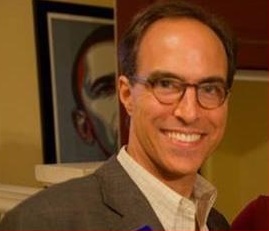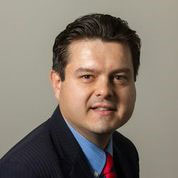Progressive Voice is a weekly opinion column. The views and opinions expressed in this column are those of the individual author and do not necessarily reflect the views of their organization or ARLnow.com.
How are we to understand the “gotcha” video attacks on Planned Parenthood – an organization serving low-income women nationwide with a network of family-oriented and community-strengthening health centers?
It started with a deceptively edited video a few weeks ago attacking Planned Parenthood’s health centers. The next step was a Republican push in Congress to gut funding for the centers, an outcome that would threaten lifesaving cancer screenings to countless low-income women, as well as critical access to contraception and reproductive education.
Then we saw an organization dedicated to criminalizing abortion hacking into the women’s health centers’ computer system.
These efforts go beyond bullying tactics we’re so used to from the right. When right wingers play “hard ball’ — as some of them put it — integrity becomes a lesser priority. What happened to the moral values of honesty and love of neighbor? They seem incompatible with today’s Republican and anti-abortion “me-only” ideologies.
Moreover, these latest attacks on women’s reproductive health advance a continuing right wing campaign to impose a radical “me-only” mindset on those who share the more common framework of “me-and-us.”
It is part of a multi-pronged effort by right wingers to rewrite our great nation’s history by asserting that the uniquely American idea of separation of church and state, which has served us well for over 200 years, was not really meant to be. This historic separation and the rich cultural-religious tapestry our nation has become conflicts with their “me-only” mindset.
This “me-only” mindset suggests that we should all accept as the only valid American morality their interpretation of the role of women and reproductive biology — fetuses, fertilized eggs, and sperm.
The right wingers want to protect fetuses no matter how much the women who carry them may be harmed. We cannot continue the historic neglect of women’s physical and mental health. Enough is enough! A woman should have the freedom to make her own health care decisions in consultation with her doctor and, for women of faith, her God.
I do not expect that everyone should share my point of view. But I also do not expect that I must accept the “me-only” point of view as a divine destiny.
We must especially not allow government actions – pushed by the pro-criminalization forces – to make lesser citizens of women. When government does not trust women, we all suffer as result.
Being bicultural, originally from Latin America, I see what women experience in places that have strict prohibitions on termination of unwanted pregnancies and even on birth control. We see something like where we were before Roe v. Wade — botched illegal abortions, troubling suicides by young and desperate pregnant women, high juvenile hopelessness, violence in places with chronic unemployment and high fertility rates, and the prosecution and marginalization of women experiencing miscarriages.
What the “me-only” activists fail to see is the fundamental notion that we Americans are greater and stronger as a united people than we are in a nation of radical individualism. Our success depends on everyone – men and women – getting an equal opportunity to contribute to our society.
We want an economy that works for everyone and does not leave women behind with less reproductive health, justice and freedom. We want strong families and communities that can depend upon family wellness and access to quality and affordable health care by everyone. That’s how we will move forward together.
Over the years, Planned Parenthood’s lifesaving women’s health centers have contributed to the strength, structure and stability of the American family and communities. Instead of defunding Planned Parenthood, Republicans should support Medicaid expansion so that lower-income women are less dependent on the health centers for cancer screenings and other lifesaving health services.
In our country, we must value women’s lives and freedom. Women, who should be trusted as much as men, should have what they need — including Planned Parenthood’s lifesaving health centers — to avoid unwanted pregnancy and childbirth as well as unwanted forced marriages resulting from those pregnancies.
It is also vitally important to have wanted children. In a society valuing women’s lives and freedom, motherhood should be voluntary. As author Katha Pollitt writes, “motherhood should add to a women’s ability to lead a full life, not leave her on the sidelines, wondering how she got there.”
The recent attacks on Planned Parenthood’s network of women’s health centers reflects the “me-only” ideology that hurts women’s health, lives and freedom, and greatly weakens the American family.
Federico E. Cura is a strategic communication trainer, outreach specialist and grassroots organizer. He spent years as a K-12 educator teaching Spanish and ESOL, and served on the Arlington County Transportation Commission.










